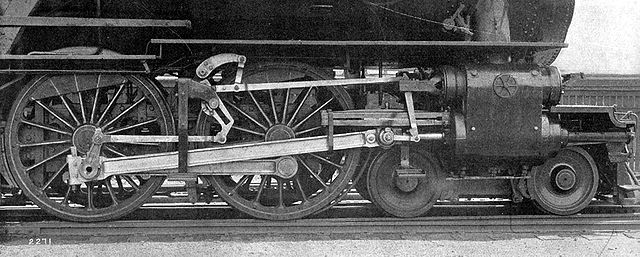After about 1910, the Baker valve gear was the main competitor to Walschaerts valve gear for steam locomotives in the United States. Strictly speaking it was not a valve gear but a variable expansion mechanism adapted to the Walschaerts layout replacing the expansion link and sliding die block. The Baker arrangement used more pivot bearings or pin joints, but avoided the die slip inherent to the expansion link, with the aim of lessening wear and the need for service; it could also facilitate longer valve travel.
Baker valve gear assembly
The Walschaerts valve gear is a type of valve gear used to regulate the flow of steam to the pistons in steam locomotives, invented by Belgian railway engineer Egide Walschaerts in 1844.
The gear is sometimes named without the final "s", since it was incorrectly patented under that name. It was extensively used in steam locomotives from the late 19th century until the end of the steam era.
A set of Walschaerts valve gear on 60163 Tornado. Note that the radius bar is set to reverse.
Swindon, Marlborough and Andover Railway Single Fairlie 0-4-4T of 1878. This was the first British locomotive to be fitted with Walschaerts valve gear
The Walschaerts valve gear on a Pennsylvania Railroad E6s




